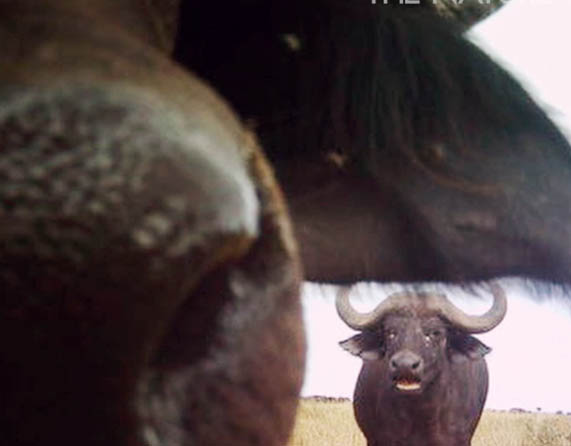Vlogs are no longer just created by humans reveals Spying on Animals, a new CBC wildlife documentary.
Directed by Canadian documentarian Scott Harper, Spying on Animals is a documentary in which multiple scientists have set up camera traps to follow a pod of bowhead whales in the Arctic, a pack of tigers in India, and other species that would be impossible for humans to follow.
Through these cameras, scientists are able to discover new information that could help these species survive.
After the documentary’s Nov. 4 premiere on CBC’s The Nature of Things, the Charlatan sat down with Harper to talk about his creation process.
The Charlatan (TC): How did the idea for this documentary come to be?
Scott Harper (SH): I saw what looked like a seed of an idea in a newspaper. It was a scientist in Jasper who’d used a bunch of camera traps to try and figure out how many wolverines, or if there were wolverines in this park space . . . the pictures were kind of interesting, a bunch of different animals had walked through these spaces where these unmanned cameras had been stationed, and I was looking at it and thinking—I wonder if there are a bunch of other examples of that around the world where scientists are using different kinds of strategies to do their research with cameras. And it turns out there’s tons.
TC: How does this research help you better understand the species and their habitats?
SH: I think volume of information is one. So, say, for example, you wanted to try and get a clear picture of how many different animals and how many of a given species exist in a large area like the African Savannah or the Serengeti.
Once upon a time, you’d have to have camera crews follow animals all over the place, whether it’s in the air or from a jeep or on water, whatever it might be, and try to gauge, based on a certain space, how many you could count physically in that way. It was laborious and time-consuming and really expensive, and I think now what this kind of technology does is it sets the researchers free and lets the cameras do their job for them.
TC: How does this information help you understand these wild animals and make sure they don’t go extinct?
SH: We shot this sequence in India with tigers. They’re able now to take pictures of every tiger in the given habitat from both sides as it moves through any given space in the jungle, and then they take those images and marry them with a certain computer software that can identify the difference in the pattern, the stripe pattern between one or the other. And so, by doing that over a certain period of time, they’re actually able to count every single tiger. So, once you have a real population census like that, then you can start to manage them.
So, you know how many prey species each one might need to survive over the course of a year—you can tell how far they’ve moved ’cause you’ll see one picture of the same one a hundred fifty kilometres away so now you know what kind of space it requires to live in.
TC: How do you hope this documentary will reach out to the general public, and better understand these species once they watch the documentary?
SH: One of the things that comes up in the doc later on is this thing called “citizen science,” and because there’s so much volume in terms of the imagery that’s being created . . . there’s no one team of scientists that could possibly go through all that. What they do is they put the information online and they ask people anywhere in the world if they want to be involved in counting species and monitoring their movement to log on and help categorize and classify these images.
I’d like to hope that people are charmed by that idea and motivated not to leave all of this to scientists and to people that make their living as conservation biologists, but actually participate in it because they need our help, and I think it’s a way to bridge that gap between the formal world of science and conservation and the average person who has a much different life.
Provided photos






